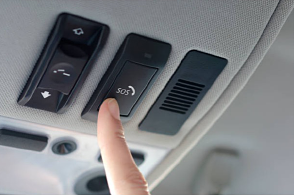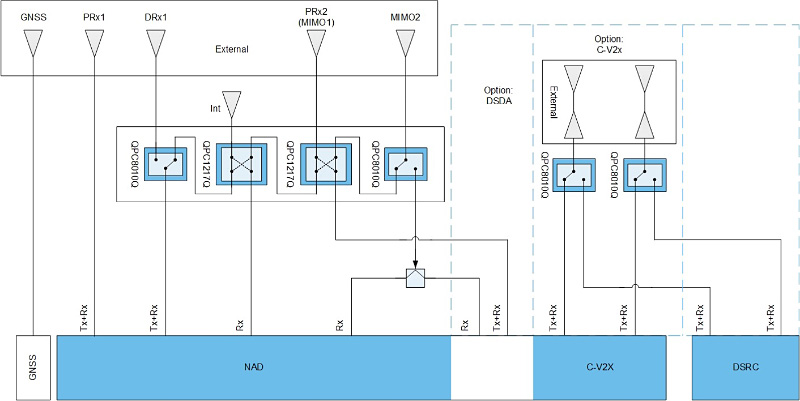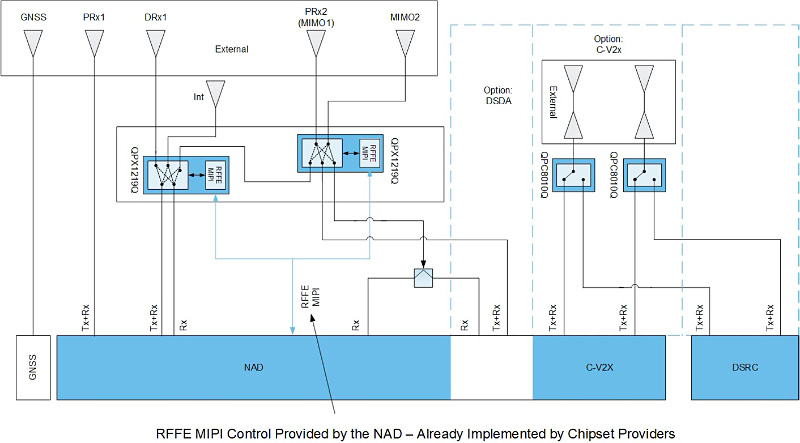What Engineers Need to Know to Achieve an Enhanced eCall Automotive Design
February 25, 2022
Engineers are always looking for the simplest solution to complex system design challenges – and eCall design in automotive applications is no different. In this post, we review how system designers are approaching designs in automobiles and how new eCall solutions can optimize the overall platform. We also share some RF design expertise and integrated solutions that help meet some of the most demanding product challenges of eCall applications.
What Is eCall?
e-Call is a European emergency-call system for vehicles that provides rapid assistance in traffic accidents. Its goal is to save lives, mitigate injury, and reduce property damage. Here's how it works: When an accident happens, an emergency call or eCall is activated automatically via the vehicle's sensors. The system then autonomously phones the European emergency service 112 call center. A phone line is established to the emergency center — sending details of the accident's exact location via GPS. Next, the emergency dispatch center sends the appropriate assistance to the location.

As of 2018, eCall systems are mandatory in all cars and vans sold in the European Union. The basic idea is to accelerate emergency response times to reduce fatalities, injuries, etc. According to Thales Group, the system can speed response time by 40% in urban areas and 50% in suburban areas. It can also reduce the number of fatalities by at least 4% and the number of severe injuries by 6%.
From a reliability standpoint, the eCall system must be flexible because when an accident happens, power wires from the battery can be severed, and electronics can be disconnected or damaged. Therefore, there needs to be backup power sources, like small batteries, for the eCall system to operate effectively and in harsh environmental conditions.
The Traditional Approach to eCalling
Traditional eCall systems have multiple switches to provide RF pathways to several antennas. These many switches require matching and power circuitry to operate, which means design times can be extensive, form-factors can be large, and RF losses can be wide-ranging. In addition, design flexibility while configuring the switch matrix can be complicated for the many antenna arrangements.
Here is a list of some challenges seen with this traditional design approach:
- The FR4-PC board material requires careful matching, which adds insertion losses and lowers performance.
- The addition of matching and power circuitry increases the system's thermal temperature, limiting overall performance.
- There is limited design flexibility when configuring the switching matrix for different antenna configurations.
- There is limited ability to have a common layout for higher-tier design models with dual SIM dual active (DSDA) versus non-DSDA.
Figure 1 below shows a traditional eCall design using discrete switches. There are multiple RF pathways, which means the system engineer must meticulously match each path to optimize the design. Figure 1 also illustrates the complexity of such a system, as each signal will require multiple digital GPIO controls (GPIO – general purpose input/output) for each path. This traditional design requires careful PC board design of splitters or the addition of external splitters to accommodate the proper layout and lower RF losses.

Figure 1: Example of a traditional eCall switching architecture.
Meeting the Challenge with Integration
Approaching the complexity problem is made easier by implementing simple integration on some of the RF pathways. This approach will obviously reduce some of the complexity, path-losses, and matching challenges but only gets you slightly down the design road. As shown in Figure 2, integrating some of the switches does help reduce matching, removes the need for many GPIO controls, replaces them with fewer MIPI controls (MIPI – mobile industry processor interface), and reduces the number of switches. Cost savings can be seen with this approach, even though this is minimal as compared to a fully integrated approach.

Figure 2: Example of somewhat integrated eCall switch architecture approach.
As shown in Figures 3 and 4, moving toward a fully integrated approach offers even more improvements beyond the integration shown in Figure 2. Figure 3 incorporates the DSDA switch option architecture and requires less RF front-end matching, lowers the number of RF losses, uses one RFFE MIPI control, integrates all the splitters inside one package, and reduces the cost of materials and design time.

Figure 3: Example of fully integrated eCall switching architecture – using pin-to-pin optional DSDA (QPC1252Q).
The design in Figure 4 is similar to Figure 3 but it does not integrate the DSDA switch option architecture. However, it still requires less RF front-end matching, offering all the benefits shown in Figure 3.

Figure 4: Examples of fully integrated eCall switching architecture – using non-DSDA (QPC1251Q) routing switch.
Qorvo Expands Portfolio of Automotive eCall Solutions for Improved Emergency Communications
Qorvo’s high-performance broadband antenna switches for Emergency Calling (eCall) are helping provide connectivity to life-saving services after an accident. The switches enable a vehicle’s primary cellular signal to automatically relay – or hot switch – to undamaged car antennas to call for help.
The newest addition to Qorvo’s automotive line-up is the QPC1220Q broadband, high-linearity Dual-Pole Four-Throw (DP4T) antenna routing switch, which spans the full Automotive AEC-Q100 Grade 2 operating range. It supports hot switching capability of up to + 34 dBm – making it ideally suited for all Telematic Control Unit (TCU) eCall and antenna routing configurations. It also reduces insertion loss of up to 1 dB, maximizing the effective power delivered to the external eCall antenna array and enabling better cellular and 5G connectivity, even in areas where signal coverage is limited.
A compact design delivers up to 35% board area savings over traditional implementations that can require four or more discrete switches, associated matching and months of engineering resources. This simplifies and speeds board design for multimode, multi-band systems.
Using the fully integrated QPC1251Q and QPC1252Q for the eCall solution allows for a much more straightforward design – one chip does the job of five individual switches. This design approach can be used for 4G and 5G chipsets, eliminates multiple switches, lowers overall system power consumption, and allows automotive manufactures to connect primary and secondary antennas. The benefits of using either of these two highly integrated components in a DSDA or non-DSDA solution include:
- Flexible, single-component solution
- Easy design solution enabling complex eCall antenna routing
- Eliminates multiple switches and the need for RF matching on the TCU module
- Allows for flexible switch control
- Provides excellent insertion loss and isolation performance
- Highly linear and offers low power consumption
- A broadband solution suitable for 5G applications up to 6 GHz
- Integrated splitters, eliminating the need for external PC board or discrete splitters
- A fully qualified AEC-100 Grade 2 solution
Electronically speaking, our vehicles are becoming more complex – essentially becoming the new mobile device. As RF connectivity infrastructure becomes more available, our vehicles will become safer and more connected to each other and to our current wireless ecosystem. Integration of antenna electronics will help accelerate this mobile connectivity. Semiconductor companies like Qorvo are working diligently with vehicle manufacturers and standards bodies to provide highly integrated solutions that help vehicle system engineers meet the needs of next-generation designs. With our integrated approach to the eCall switching system, we continue to work with customers to solve for the complex design requirements that ultimately help create best-in-class automobiles.
Have another topic that you would like Qorvo experts to cover? Email your suggestions to the Qorvo Blog team and it could be featured in an upcoming post. Please include your contact information in the body of the email.
